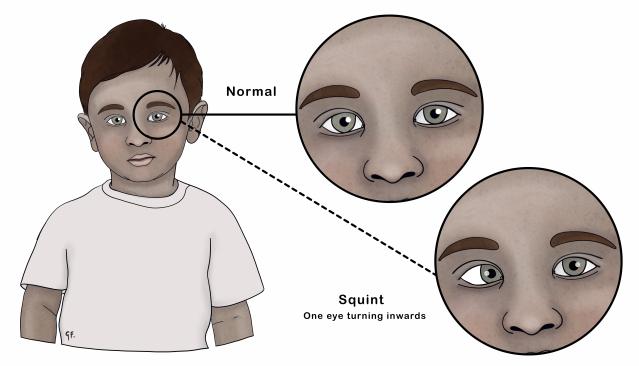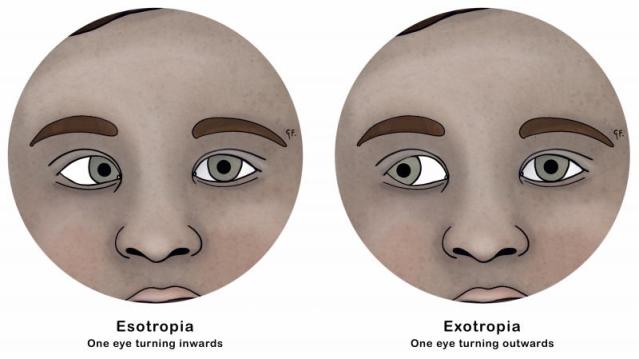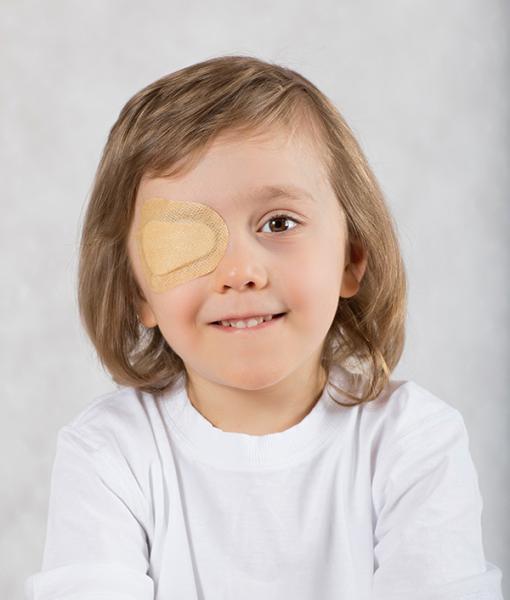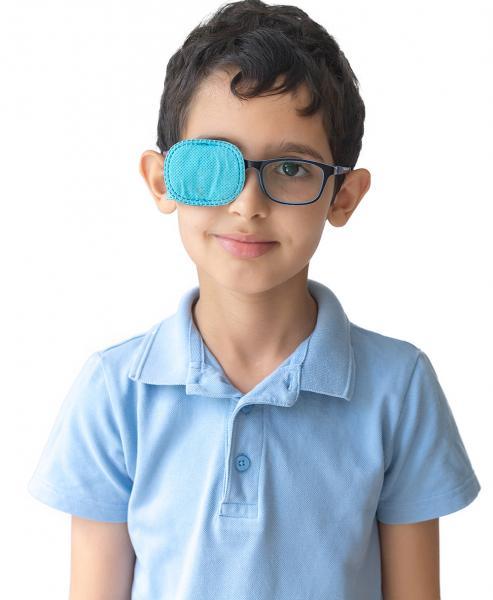Key points about squint
- a squint is also called strabismus
- a squint is when the eyes are not looking in the same direction
- treatment may include glasses, patching, exercises, or surgery and is usually a combination of these
What is a squint?
A squint (or strabismus) is when the eyes are not looking in the same direction. A squint may be noticeable all the time, or it may come and go.
The eyes of newborn pēpi (babies) may sometimes appear to wander or be turned. But, by around 4 months of age, your baby's eyes should be straight and move together in all directions.
Some pēpi look like they have a squint due to the wide bridge of their nose. As they grow, their features develop and this appearance goes away. But, a child with a true squint will not grow out of it.

Different types of squints
When one eye is straight the other may look in or out as in the picture below.
One eye turning inwards (called esotropia) or one eye turning outwards (exotropia).

One eye may also look up (hypertropia) or down (hypotropia)
Causes of squint
Tamariki (children) can be born with a squint or develop it in childhood. Often, it's caused by a problem with the muscles that move the eyes, and can run in families.
Sometimes, a child may develop a squint because an eye is abnormal and there is a problem with sight.
What can I do if I think my child has a squint?
See a health professional if you think your baby or child has a squint.
Managing squint
Tamariki do not outgrow a squint. It's important to start treatment at an early age.
Treatment might include glasses, patching, exercises, or surgery and is usually a combination of these.
Your child will need to see an ophthalmologist (eye specialist) or an orthoptist (specialist in the assessment, diagnosis and treatment of certain eye problems).
The aims of treatment are:
- good vision in both eyes
- eyes that look as straight as possible
- both eyes working together equally
Possible complications of a squint
The main complication of a squint is amblyopia. Sometimes, people call amblyopia a 'lazy eye'.
What is amblyopia?
When eyes don't line up together, the straight or straighter eye does most of the work. The eye that's not straight doesn't see as it should. It becomes weaker. It's not receiving as clear a picture as the other eye. The part of the brain responsible for vision in that eye also doesn't develop properly. This is called amblyopia.
If left untreated it can lead to very poor vision. After the age of 5 and a half years, it gets more difficult to reverse amblyopia. After 7 years, it is usually impossible.
Amblyopia is the most common cause of poor vision in tamariki.
Causes of amblyopia
The most common causes of amblyopia are:
- a squint
- refractive error (abnormal focus)
- ptosis (droopy eyelid)
- cloudiness in one eye
Managing amblyopia
To reverse amblyopia and bring the vision back in the weaker eye, your child's treatment will focus on making their brain use the weaker eye again.
Treatment for amblyopia is patching and/or glasses. When treatment starts at an early age, vision often improves.
Eye patching
Patching or covering the good eye is the most common way of encouraging your child to use the weaker eye.

If your child's treatment includes patching, their eye specialist may recommend patching either:
- full-time - your child wears the patch all day every day
- part-time - for a certain number of hours a day
After a set period, your child will have a vision check.

Glasses
Some tamariki need glasses as part of their treatment.
If your child does have glasses, they may be able to wear a patch over one lens.

Acknowledgements
Illustrations of child with squint by Dr Greta File. Property of KidsHealth.
Photos are from iStock.
